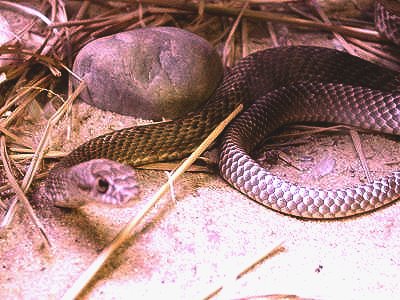-
The signs posted at each zoo exhibit provide fascinating information about the animal in the exhibits. You should always read them aloud to your infant, toddler, or preschooler.
Remember to (1) run your finger along the words as you read them, (2) review what the sign says and paraphrase it, and (3) relate what the sign says to the animal in the exhibit.
Below is a photo of a sign at the Philadelphia Zoo and examples of how to follow the steps.
1. Read the sign aloud. Run your finger from left to right across the words as you read them.
- This sign tells us about the snake in this exhibit. These words say "western coachwhip". The snake in this exhibit is a western coachwhip.
- Let's read the sign. The sign says ...
2. Explain and paraphrase the words.
- The sign tells us western coachwhips don't move much when they feel cool.
- The sign tells us western coachwhips look for food when they feel warm.
- The sign says the food western coachwhips look for is lizards and small vertebrates. Vertebrates are animals with backbones. The sign tells us western coachwhips eat lizards and small animals with backbones.
- Here is a photo that shows the whole body of a western coachwhip. And here is a photo of the head of a western coachwhip with an arrow pointing to its eye. The words here say "keen eyesight makes them good hunters". Western coachwhips have very good eyes that help them find food.
3. Look at the animal in the exhibit. Talk about what the sign says about it. Compare it to the ones in the photos.

- Let's look at the western coachwhip in the exhibit. He likes to eat lizards. He likes to eat when he feels warm. When he feels cool, he doesn't move much.
- See, he looks like the western coachwhip in the photos. He is not quite the same color. Some western coachwhips must be darker.
- See his eyes? He has big eyes, just like the western coachwhip in the photo.
|

